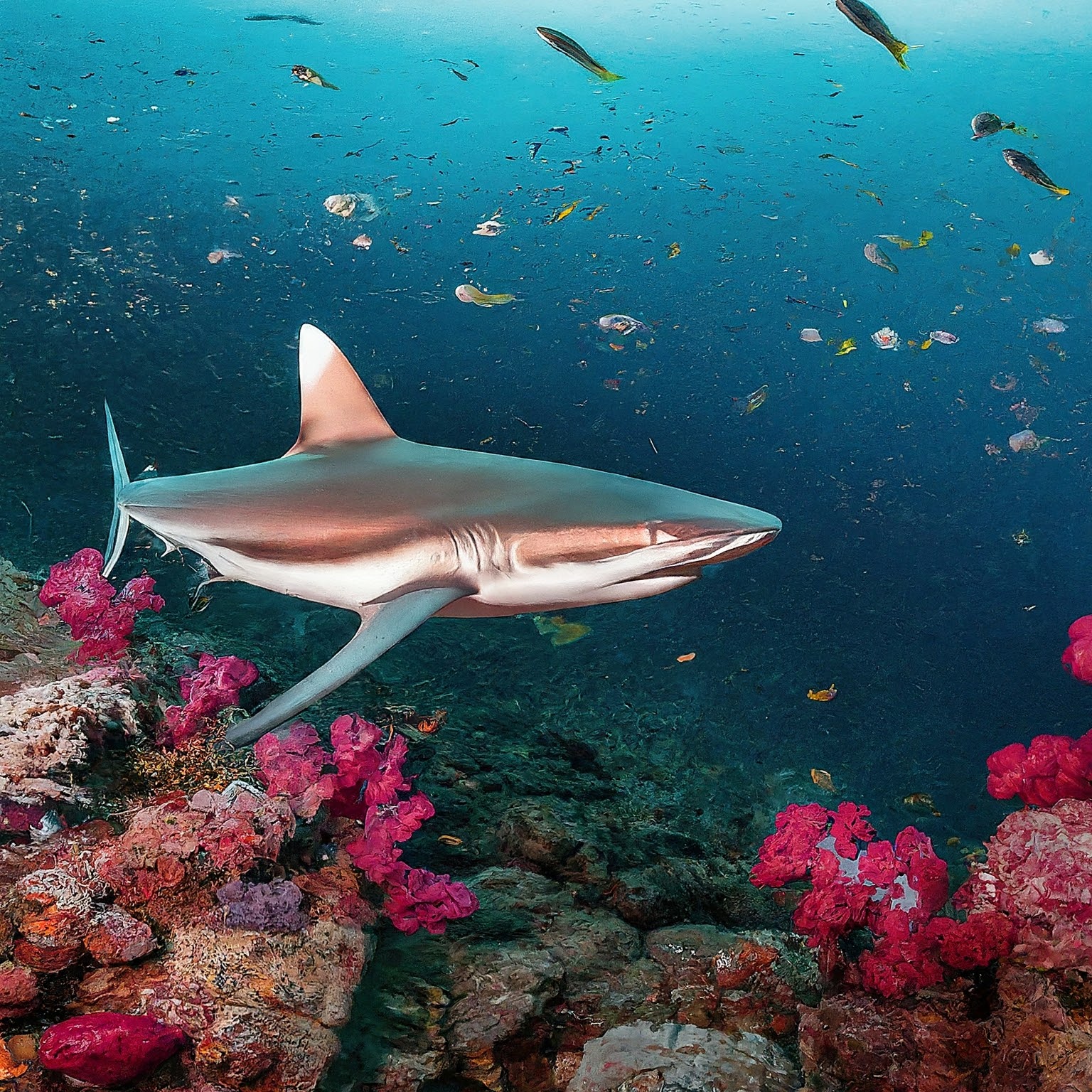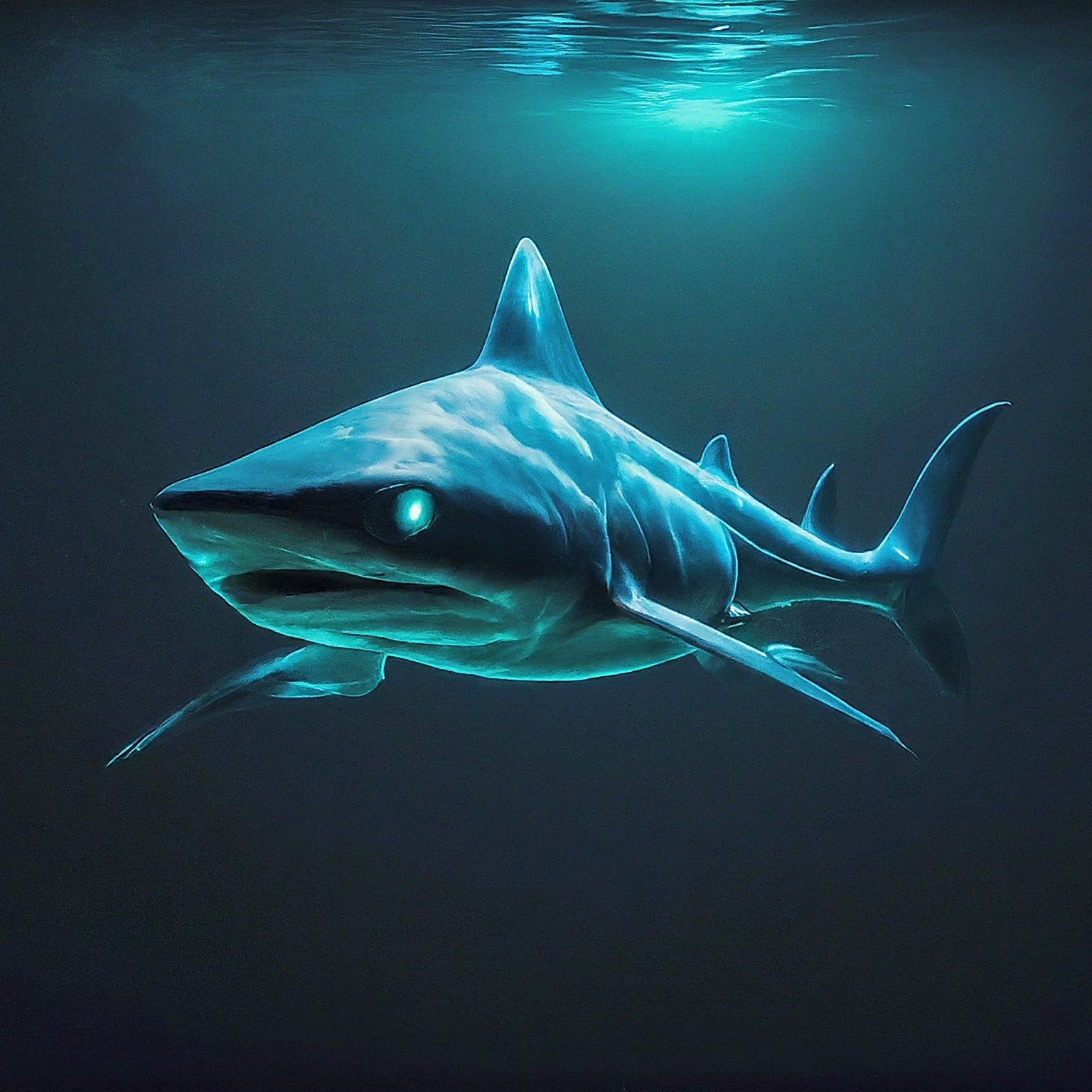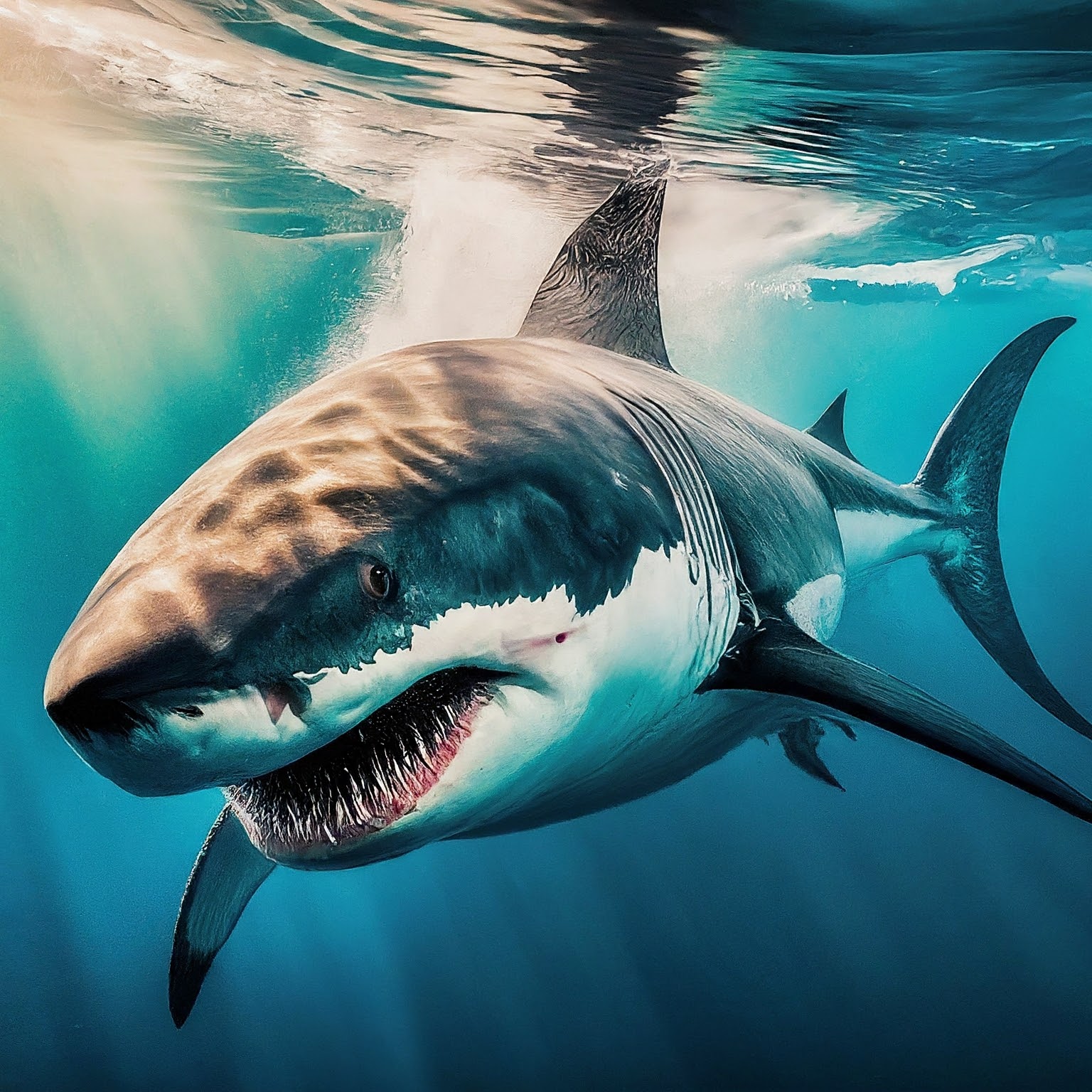Meet the Author:
I’m Dr. Anya Patel, a marine biologist with a lifelong fascination for the underwater world. Sharks, in particular, have captivated me with their unique adaptations and resilience. Through this blog, I hope to share my knowledge and ignite your curiosity about these awe-inspiring creatures.
Sharks: Masters of the Deep
The word “shark” evokes a range of emotions. For some, it conjures images of powerful jaws and sleek bodies gliding through the ocean depths, a vision that can inspire both awe and trepidation. But these magnificent creatures are far more than just fearsome predators. With a lineage stretching back over a staggering 400 million years, sharks boast a remarkable evolutionary history, making them true “living fossils” of the ocean.
Imagine a time before dinosaurs roamed the Earth, a time when the oceans teemed with bizarre and fascinating creatures. This was the world that sharks first called home. Their incredible journey through time serves as a testament to their remarkable adaptability and resilience.

Secrets of Survival – Unveiling the Shark’s Toolkit
So, what has allowed sharks to reign supreme for so long? The answer lies in a remarkable set of adaptations that have enabled them to thrive in a vast array of marine environments. Let’s delve deeper into some of these key features:
-
Skeletal Structure: Unlike bony fish, sharks have a skeleton made of cartilage, a flexible and lightweight material. This design provides several advantages. First, it allows for incredible agility and maneuverability, making sharks adept hunters and efficient swimmers. Second, a cartilaginous skeleton is lighter than a bony one, which helps sharks conserve energy, particularly important for large species like whale sharks.
-
Electroreception: One of the most fascinating adaptations of sharks is their ability to sense electrical fields emitted by other animals. This “sixth sense” is achieved through specialized organs called ampullae of Lorenzini located around the snout. These ampullae allow sharks to detect the faint electrical fields generated by the muscular contractions of their prey, even in murky or low-light conditions. Electroreception also plays a role in navigation, helping sharks locate currents and potentially even aiding in communication with other sharks.
-
Sensory Organs: Sharks possess an impressive array of sensory organs that allow them to navigate complex environments and locate prey with exceptional precision. Their eyesight, while not as sharp as some land animals, is well-adapted to underwater conditions. Many shark species also boast an exceptional sense of smell, allowing them to detect blood and other chemical cues from great distances. Furthermore, sharks have a unique sensory system called the lateral line system. This network of canals and receptors along their bodies can detect subtle changes in water pressure, helping them navigate currents, sense vibrations, and even detect the presence of nearby prey.
-
Skin of Teeth: Sharks are not covered in smooth skin; instead, they are covered in tiny, tooth-like structures called dermal denticles. These denticles are arranged in a specific pattern that reduces drag and creates a more streamlined body, enhancing swimming efficiency. The microscopic teeth on these denticles also help sharks maintain a clean, parasite-resistant surface.

Table 1: Unveiling the Shark’s Toolkit
| Feature | Description | Benefit |
|---|---|---|
| Cartilaginous Skeleton | Lightweight and flexible | Enhanced agility, maneuverability, and energy conservation |
| Electroreception | Sensing electrical fields | Navigation, hunting, communication (potential) |
| Keen Senses | Superior eyesight, smell, and lateral line system | Precise prey detection and environmental awareness |
| Dermal Denticles | Tiny tooth-like structures on skin | Reduced drag, increased swimming efficiency, parasite resistance |
A Diverse Arsenal: Specialized Adaptations for Different Niches
The adaptations mentioned above represent just a glimpse into the diverse toolkit that sharks possess. Different shark species have evolved specialized adaptations to thrive in their specific ecological niches. For example, some deep-sea sharks have bioluminescent organs that lure prey in the darkness, while filter feeders like the basking shark have modified gill rakers to strain plankton from the water. Hammerhead sharks have a uniquely shaped head that may enhance their ability to detect prey and navigate complex environments.
These remarkable adaptations have allowed sharks to colonize a vast array of marine habitats, from the sunlit surface waters of coral reefs to the crushing depths of the abyss.
Facing the Future: Threats and Conservation Efforts
Despite their impressive evolutionary history and adaptations, sharks face significant threats today. Here are some of the key challenges:
-
Overfishing: Sharks are often caught incidentally in fishing gear targeting other species. Additionally, some shark species are directly targeted for their fins, which are used in certain soups, despite the lack of scientific evidence for any health benefits. This unsustainable fishing pressure has led to population declines for many shark species.
-
Habitat Destruction: Coastal development, pollution, and climate change are all contributing to the destruction of vital shark habitats, such as coral reefs and mangrove forests. These losses disrupt breeding grounds, feeding areas, and crucial nursery habitats for young sharks.
-
Negative Perceptions: Unfortunately, sharks are often portrayed as mindless killing machines in popular media. This portrayal fuels public fear and hinders conservation efforts.
A Beacon of Hope: The Fight for Shark Conservation
The good news is that there is a growing movement dedicated to shark conservation. Here are some initiatives making a positive impact:
-
Marine Protected Areas (MPAs): The establishment of MPAs that restrict or prohibit fishing activities can provide safe havens for shark populations to recover.
-
Sustainable Fishing Practices: Promoting responsible fishing practices that minimize bycatch and avoid targeting vulnerable shark species is crucial.
-
Public Education: Raising public awareness about the importance of sharks in healthy marine ecosystems and dispelling negative stereotypes is essential for garnering support for conservation efforts.
-
Technological Advancements: New technologies, such as satellite tagging and DNA analysis, are aiding scientists in tracking shark populations and understanding their migratory patterns. This data is vital for informing conservation strategies.

Why Should We Care About Sharks?
Sharks are not just fascinating creatures with a rich evolutionary history; they play a vital role in maintaining healthy marine ecosystems. Here’s why their conservation is critical:
-
Maintaining Balance in the Food Web: Sharks are apex predators, meaning they sit at the top of the food chain. By preying on weaker or sick fish, they help to control populations and maintain the overall health of the ecosystem. A decline in shark populations can lead to cascading effects throughout the food web, disrupting the delicate balance of marine life.
-
Promoting Biodiversity: Healthy shark populations contribute to the overall biodiversity of our oceans. A diverse ecosystem is more resilient to change and can provide a wider range of ecosystem services, such as food production and coastal protection.
-
A Source of Scientific Knowledge: Studying sharks can provide valuable insights into evolution, adaptation, and even human health. For example, research on shark wound healing has led to advancements in wound healing treatments for humans.
What Can You Do to Help?
Here are some simple ways you can contribute to shark conservation:
-
Support Sustainable Seafood: Choose seafood that is certified by organizations like the Marine Stewardship Council (MSC), which promotes sustainable fishing practices.
-
Educate Yourself and Others: Learn more about sharks and share that knowledge with your friends and family. Dispelling myths and promoting a better understanding of these magnificent creatures is crucial.
-
Get Involved with Conservation Organizations: Several organizations are dedicated to shark conservation. You can support their work through donations, volunteering, or participating in advocacy campaigns.
-
Reduce Your Plastic Footprint: Plastic pollution poses a significant threat to marine life, including sharks. By reducing your use of single-use plastics and properly disposing of waste, you can help to protect our oceans and the creatures that call them home.
A Future Where Sharks Thrive
By understanding the incredible legacy of sharks, appreciating the threats they face, and supporting conservation efforts, we can work towards a future where these magnificent creatures continue to thrive in our oceans. Sharks are not just relics of the past; they are vital components of healthy marine ecosystems, and their continued existence is essential for the well-being of our planet.
Let’s ensure that the story of sharks continues for another 400 million years and beyond!
Further Exploration:
Do you have any questions about sharks or their conservation? Let me know in the comments below! I’d be happy to delve deeper into specific topics in future articles.
Remember: Knowledge is the first step towards conservation. By learning about sharks, we can foster respect for these incredible creatures and inspire action to protect them.












